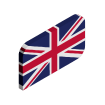0–40
degrees
6 – 41
Ø
20-400 mm
The connecting parts are smooth - polyethylene (polymer) fitting. Designed for welded hermetic connection of polyethylene (polymer) pipes, fittings and /or fittings, can be of various shapes.
The nominal outer diameter of the smooth connecting part must correspond to the nominal outer diameter of the pipes, spigots and/or fittings to be connected, which can be joined by butt welding with a heated tool or connecting parts with an embedded heater (electrowelded).



























